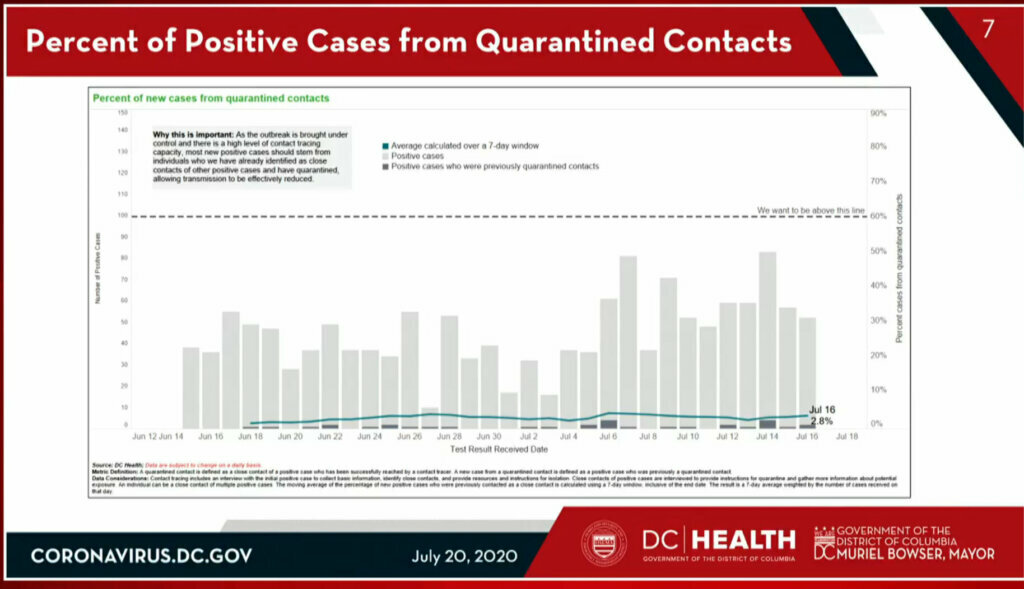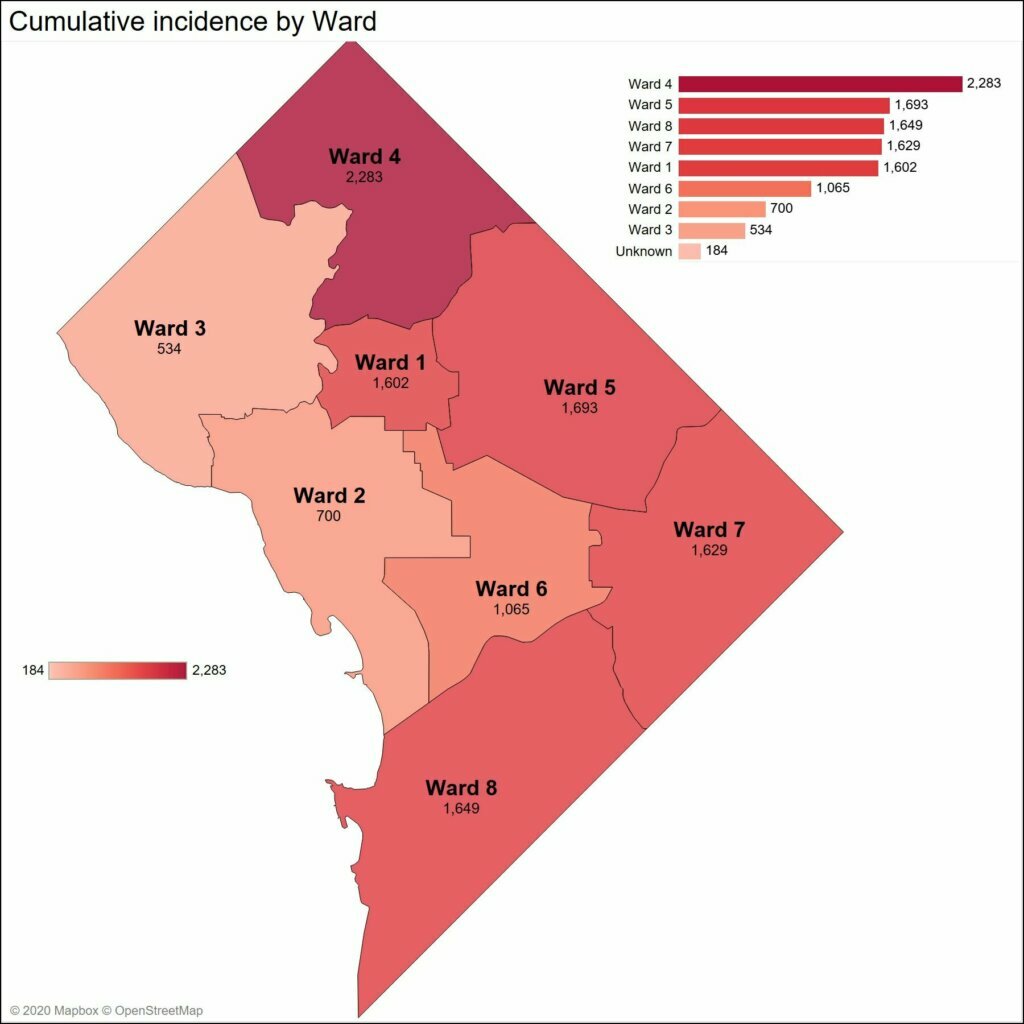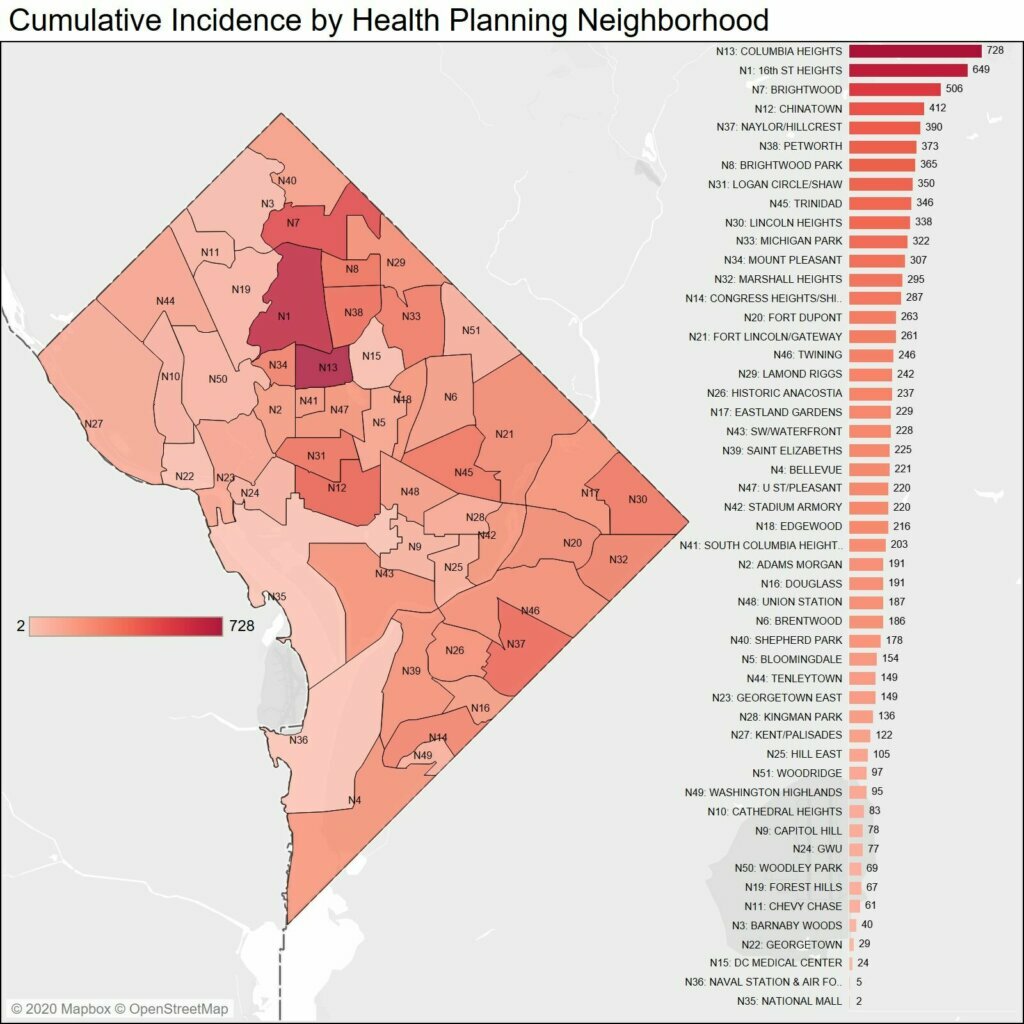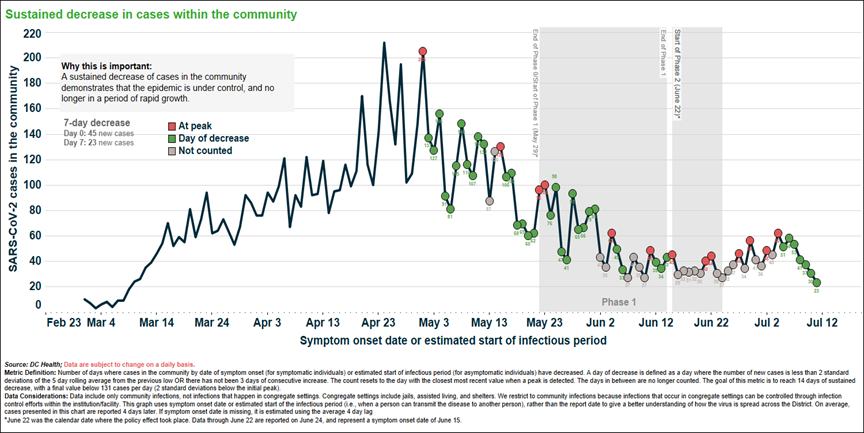D.C. is falling far short of its goal when it comes to tracing new coronavirus cases to quarantined residents, according to data released Monday.
Just 2.8% of D.C.’s coronavirus cases can be traced back to people in quarantine. The goal is 60%.
In short, the virus isn’t contained.
“Ideally, what we would want to see when I talk about having more of our cases be connected to each other — meaning that we have less evidence of community spread, meaning that our cases are connected to each other, our cases are occurring in clusters, meaning that we have more evidence of containment in the District — would be that that shaded gray bar and that darker gray bar are one in the same, that they are covering each other, or ideally is that that dotted line would be at 60%,” D.C. Health Director Dr. LaQuandra Nesbitt said.
The cases aren’t connected to each other.

“We don’t have many of our cases coming out of quarantine, or many of the cases that we are diagnosing are not people who were previously identified as being contacts of a positive case, or people who were already in quarantine,” Nesbitt said.
“Many of the people who are being diagnosed with COVID-19 in the District are not people who were already in quarantine or not people who were already someone else’s close contact,” she said.
She summed up a good anti-coronavirus strategy as wear a mask, keep 6 feet of distance and choose your activities wisely.
“We still need people to be very judicious about choosing their activities … We want people to be very focused on choosing their activities wisely in a way that they haven’t been heretofore. And even when we’ve given instructions on how to social distance, making sure that people are actually socially distant when they go into these venues — what does that mean?” Nesbitt said.
“Are you socially distant in the workplace? How often are you wearing your mask? Are you giving space in elevator cabs? All of those things really make a tremendous amount of difference. And we need people to be adhering to them and taking them very seriously.”
Data on D.C.’s ability to trace new cases to quarantined contacts will be posted to the dashboard, Nesbitt said.
Teams to visit homes are also being activated, according to Nesbitt.
“Home visits for infectious diseases is not new,” she said. “We’ve used this model with some of our other infectious diseases, such as sexually transmitted infections and (tuberculosis). And so we’re going to begin to use this as one of our COVID-19 response programs,” Nesbitt said.
The program starts next week, with a focus on the highest risk populations and individuals who have not completed interviews.
- Sign up for WTOP alerts
- Coronavirus FAQ: What you need to know
- Latest coronavirus test results in DC, Maryland and Virginia
- DC to close COVID-19 testing sites Monday due to ‘dangerous’ heat
- DC-area swimming pools reopen with restrictions
- Montgomery Co. private school moving all classes outside this fall
Looking for more information? D.C., Maryland and Virginia are each releasing more data every day. Visit their official sites here: Virginia | Maryland | D.C.
Heat wave
D.C. Mayor Muriel Bowser activated the city’s heat emergency plan over the weekend in light of dangerously high temperatures that are expected to plague the region for the rest of the week.
Monday’s high temperatures are expected to stick around Tuesday, with heat index values projected around 101 degrees. Daytime highs are expected to remain in the 90s for the rest of the week, causing some area health officials to reschedule or cancel COVID-19 testing.
Public testing sites being closed for the day include D.C.’s downtown location at Judiciary Square, its location in Anacostia and the walk-up testing provided at city firehouses.
“The temperatures will be too dangerous for our staff and volunteers at the public testing sites, as well as the grocery sites, where patrons and staff are outside,” Bowser said.
Get the list of cooling centers and more at heat.dc.gov.
DC coronavirus numbers
The District reported 78 new coronavirus cases Thursday, bringing the total to 11,339.
Another D.C. resident lost their life to the virus, for a total of 579 dead.
Track the District’s coronavirus data online.
Below are maps of coronavirus cases by ward, neighborhood and community spread (click to enlarge).











